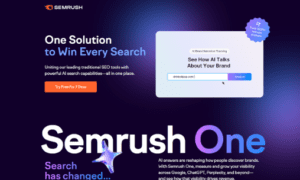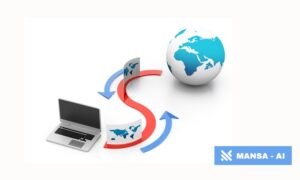A TechBullion Q&A with Gaurav Bhattacharya, Founder & CEO of Jeeva AI
Posted June 26, 2025
1) Gaurav, give us the back-story behind Jeeva AI.
Gaurav Bhattacharya: I grew up in New Delhi and was the kind of kid who took computers apart just to see how the code came alive. After a decade building go-to-market systems for SaaS vendors, I kept seeing the same pain: highly paid reps were spending most of the week on admin work while leadership begged for more pipeline. I founded Jeeva to give every seller a digital colleague that gladly tackles the busywork—research, sequencing, scheduling, CRM hygiene—so humans can invest their energy in the genuine art of selling.
2) “Agentic AI” is suddenly everywhere. What does the term actually mean?
We’re talking about software that can perceive what’s happening, plan the next best move, act across multiple tools without supervision, and then learn from the outcome so the loop improves the next time. Deloitte calls these systems “autonomous generative-AI agents” and predicts that a quarter of companies will be piloting them by the end of this year, with adoption eclipsing fifty-percent in just two more years.
3) Why is this shift so urgent right now?
Because the opportunity cost of waiting has exploded. Salesforce’s latest State of Sales study shows that reps still spend only twenty-eight percent of their week in live customer conversations; the remaining seventy-two percent disappears into data entry, scheduling, and internal prep. McKinsey’s modelling suggests that generative AI, when embedded across the revenue funnel, can add three to five percent in topline revenue simply by freeing that trapped capacity. If your competitors have already reclaimed a day a week for every rep, you are starting each quarter behind.
4) Walk us through a real customer workflow that now runs entirely on agents.
Imagine an SDR charged with finding newly funded AI start-ups. A discovery agent monitors funding news and hiring sprees, flags accounts that match the ICP, and quietly enriches those records with direct emails and phone numbers. As soon as the data is clean, an outreach agent drafts a short sequence that references the funding announcement and pushes everything into the rep’s sequencing tool. When a prospect replies, a calendar agent negotiates time zones, sends the invite, and reschedules automatically if a conflict pops up. The moment the call ends, a note-taker agent records the conversation, produces a transcript, writes an action-item summary, and logs both in Salesforce. The human still builds rapport, handles objections, and strategizes deal structure, but the drudgery is gone.
5) Many so-called “AI assistants” already exist. How is Jeeva different?
Most assistants are point solutions: one writes copy, another records calls, a third verifies email addresses. They live in separate tabs, and it is still up to the rep to stitch the experience together. Jeeva ships a family of agents that share memory through a secure vector database, so the note-taker already knows which intent signal booked the meeting and tailors the follow-up accordingly. Instead of juggling five apps, the rep collaborates with a single, context-aware teammate who never sleeps.
6) Let’s talk numbers. What lift are customers actually seeing?
Across our early pilots, reps are clawing back roughly seven hours every week and converting that time into a twenty-two-percent jump in qualified meetings inside forty-five days. Revenue leaders trace three to five percent of new bookings directly to the capacity and personalization gains provided by the agents, which tracks almost one-for-one with McKinsey’s macro forecast.
7) Under the hood, how do you keep that autonomy safe?
We orchestrate multiple language models so each task uses the optimal blend of latency, privacy, and cost. A guardrail layer grounds every generation in CRM truth to avoid hallucinations, while a human-in-the-loop checkpoint appears any time model confidence dips below a customer-defined threshold. All actions stream into an immutable audit log, and a single kill switch lets security teams pause or roll back an agent in seconds. The goal is autonomy, not anarchy.
8) Data privacy and compliance tend to be board-level worries. How do you address them?
Personal data is encrypted at the field level, stored in the customer’s chosen region, and never leaves that boundary without consent. We map every autonomous action to a human-readable explanation, so an auditor can see exactly why an email was sent or a record was updated. If a prospect exercises a “right to be forgotten” request, the vector memory deletes their embeddings permanently, and the agent can no longer reference them.
9) Change management often kills good tech. What does a sensible rollout look like?
We advise starting with one painfully obvious chokepoint—meeting scheduling is a popular entry point because everyone hates the back-and-forth—and establishing a clean baseline before go-live. When a rep sees a fifteen-minute task collapse to ninety seconds on day one, adoption takes care of itself. Only once the win is quantified do we expand to enrichment, sequencing, or call intelligence. Momentum trumps perfect architecture every time.
10) Is agentic AI limited to sales?
Not at all. Marketing teams are using orchestration agents to spin up campaigns the moment intent surges. RevOps teams let agents patrol data hygiene so the CRM stays clean without weekend marathons. Customer-success orgs deploy agents that watch usage telemetry and trigger proactive check-ins long before churn risk becomes visible in spreadsheets. Gartner is already calling this broader movement “Augmented RevOps” and expects it to become table stakes within two years.
11) What myths do you still hear in the market?
The loudest is that AI erodes the human touch. In reality, buyers ignore outreach that lacks relevance, and relevance demands time that humans rarely have. By pushing the grunt work to agents, we increase the space for genuine conversation. The second myth is that autonomous systems are black boxes. A mature platform lets you inspect every decision in plain language. And, finally, the idea that only enterprises can afford this tech is outdated. Our self-serve tier starts at two seats precisely because small teams feel the admin tax most acutely.
12) Pricing tends to be a thorny topic in an autonomous-agent world. How do you approach it?
We keep it simple: hours saved, revenue created, risk reduced. If an SDR’s fully burdened cost is eighty dollars per productive hour and we return seven hours a week, that is nearly twenty-eight thousand dollars in new selling capacity per rep, per year—before the extra meetings land. Framing the conversation around concrete business impact resonates far more than traditional seat-based SaaS pricing.
13) Ethics matter, especially at this level of automation. Where do you draw the line?
Agents always disclose that they are AI when communicating externally. We respect every unsubscribe or data-deletion request immediately, and we run quarterly bias audits to make sure language and targeting stay equitable. Automation without accountability is just faster spam, and nobody needs more of that.
14) What new skills will the best sellers need over the next two years?
Think of prompt framing as the new Excel. Reps will get outsized results if they can articulate objectives precisely: “Find me CFO-level contacts at Series B fintech firms who have recently migrated off legacy CRMs.” Data curatorship also becomes critical, because clean inputs are the fuel for every agent. Most important, sellers will double-down on the one skill no algorithm can replicate: building trust through nuanced, human conversation.
15) Finally, look ahead to 2026. What does the revenue team of the future look like?
I see swarms of specialized agents, a pricing advisor, a legal red-liner, a forecast optimizer, negotiating with each other behind the scenes and handing the account executive a single, risk-vetted proposal to present to the buyer. Humans will shift from “operators of point tools” to “conductors of intelligent orchestras.” The companies that start wiring for that reality now will outpace late adopters not by a few percentage points but by an order of magnitude in customer experience and revenue velocity.
Connect with Gaurav Bhattacharya
Readers can find me on LinkedIn or explore live demos at Jeeva.ai.



































